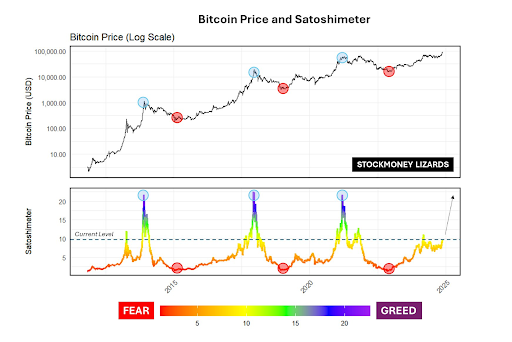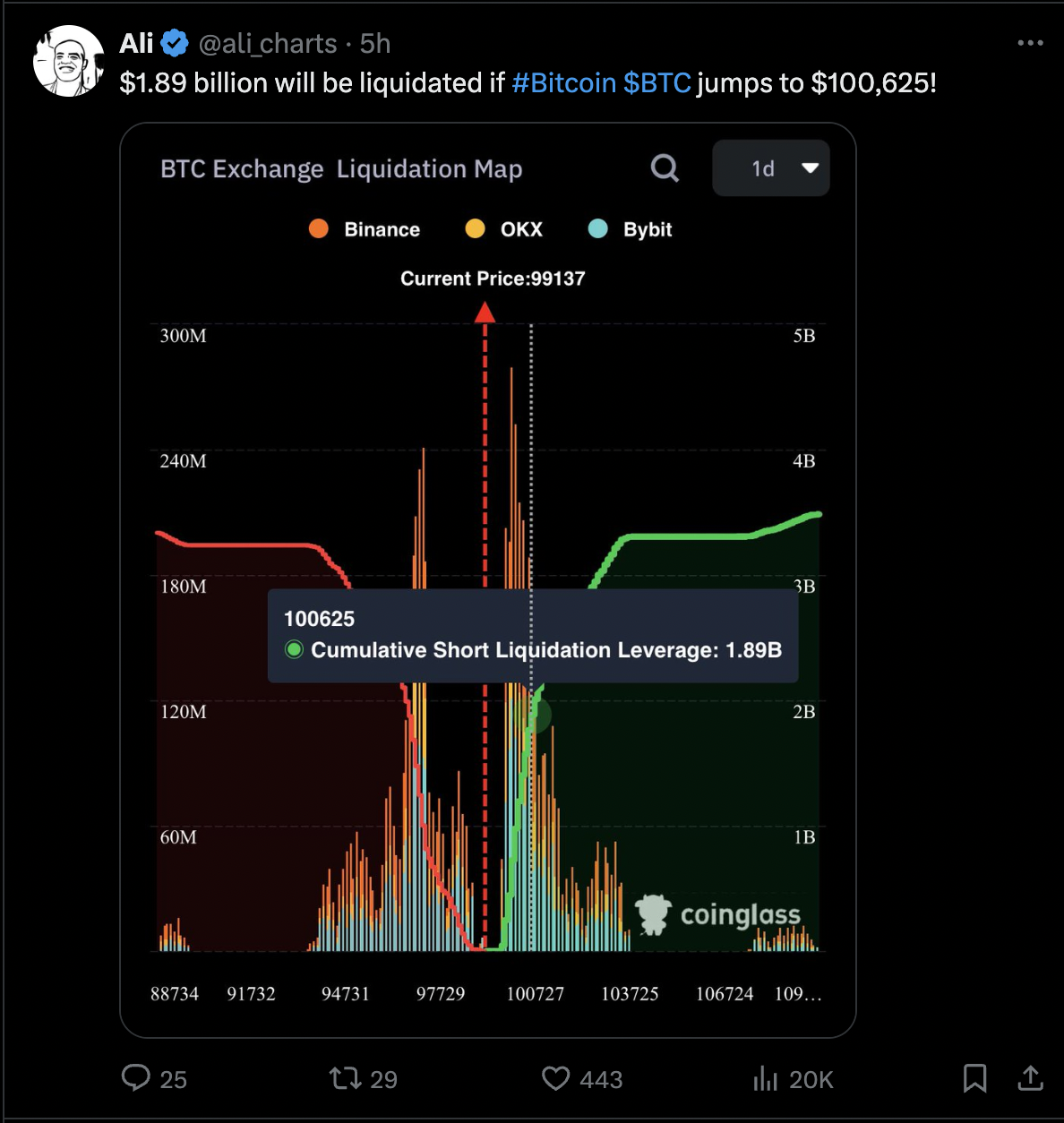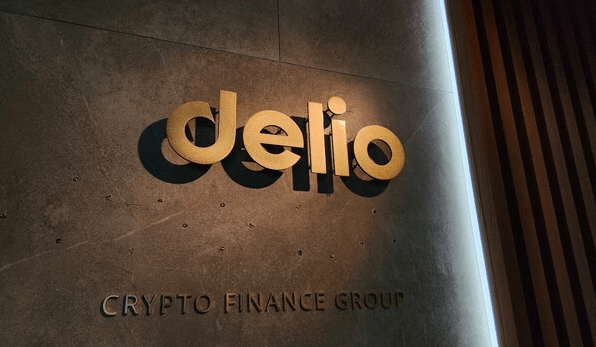
With the rise of derivatives trading, how do protocols ensure that retail investors are not going in blind?
BTCWith an increase in the number of retail investors dabbling in derivatives trading and investors hopping into decentralized exchanges (DEXs) due to regulations in the United States and China, there has been a rise in users utilizing derivatives DEXs, with Bitcoin (BTC) whales moving into derivatives and an increase in buying interest in derivative contracts.
This has created a surge in the daily trading volume for derivatives protocols, allowing them to briefly take over centralized finance platforms such as Coinbase, which sparked interest in retail investors with regard to moving towards derivatives trading in decentralized finance (DeFi). However, without a proper introduction to derivatives in DeFi, new investors are likely to hop off derivatives trading as quickly as they hopped on.
5 years ago I left @coinbase and eventually founded dYdX
— Antonio | dYdX (, ) (@AntonioMJuliano) September 26, 2021
Today, for the first time, @dydxprotocol is doing more trade volume than Coinbase pic.twitter.com/QzoKAUpH29
But is this the case in the current DeFi sector?
Derivatives in DEXs: Are they worth the risk?
Derivatives in DeFi bring the rewards but leave behind the inefficiencies that traditional finance offers. However, the crypto market is a volatile one, to say nothing of the complexity of trading derivatives on DEXs, in which retail investors have to learn to make the trades by themselves. These investors require guidance and knowledge on both DeFi and platform navigation when they enter derivatives for the first time.
Related: Decentralized and traditional finance tried to destroy each other but failed
If you used DeFi applications in 2020, you probably feel the user experince is outdated compared to their centralized exchange counterparts. Now, in order to onboard new waves of users, especially the ones who used to use centralized exchanges, protocols now have to focus on simplicity and the experience. By guiding new users into protocols, users are given space in which to understand the program, which encourages them to stay. Otherwise, the taint left behind from users who had bad experiences in derivatives might cause future traders to shun derivative trading in DeFi altogether.
From a user’s perspective, derivatives could be just a tool to achieve a certain goal, be it accessing leverage or hedging one’s existing position. As derivative protocol developers, what we can do is provide a clear explanation of the user interface, as well as the risks involved in derivatives trading. For instance, we can provide “tool tips” to explain complicated functions on the application site for first-time users, hosting bi-weekly onboarding calls to provide guidance to new users on how to use the platform, and otherwise answer any concerns they might have. Other than that, having a testnet on which users can paper trade can act as a means for them to familiarize themselves with the platform and trading experience before putting real money into the protocol. The DeFi protocol itself shouldn’t be an obstacle to trade derivatives if users are well-informed of the risks and are well-educated.
Related: 5 ways derivatives could change the cryptocurrency sector in 2022
DeFi redefining derivatives trading
Most new investors are not experts in DeFi derivatives and, as such, protocols are actually putting in more effort to welcome these new investors in such a way that they are not too ill-equipped to handle the torque in derivatives. There is more educational content on derivatives trading nowadays, whether on Twitter, YouTube, Medium or Discord. So, it’s much easier to learn more about derivatives trading in DEXs now than in the summer of DeFi back in 2020.

Apart from that, DeFi protocols are replicating traditional finance in driving growth. For example, there are fintech applications, such as Robinhood, that make trading options easier by detecting the strategy that a user might want to use and letting users do a one-tap to execute that strategy. Similar strategies have been adopted in the DeFi space. In fact, there are increasingly more protocols offering structured products with derivatives, such as Ribbon Finance and Stake DAO, which lets newcomers enjoy the benefits of using derivatives seamlessly.
Experience more adoption by creating more experiences
Protocols are focusing on various methods by which to enhance the usability of their protocols. The path to mainstream adoption of cryptocurrency is hindered by one huge obstacle: a lack of usability. By increasing usability and providing a simplified and straightforward interface, users get onboarded easier, allowing a quicker adoption of derivatives trading.
Related: Crypto mainstream adoption: Is it here already? Experts answer, Part 1
Today, most derivatives protocols are exceedingly user-friendly, allowing new investors to hop in and immediately start trading without any confusion. However, not all protocols are adopting user experience as their priority, resulting in many investors being unable to reliably assess the value and risks of their derivatives product, causing the government to create more regulations on derivatives. Without a positive user experience for retail investors, this may end up creating a negative stigma for derivatives trading.
Related: How should DeFi be regulated? A European approach to decentralization
Retail investors can expect derivatives trading to become commonplace in the future, allowing anyone with a decentralized wallet to easily partake in trading. The popularity of derivatives trading will continue to rise, and derivatives protocols must focus on the experiences that they give to users to keep up with the demand. As a matter of fact, the rising usage of derivatives trading in DeFi will create more competition between each protocol to create better products that end up benefiting the end-users, shaping a healthier ecosystem in the future in which decentralized derivatives trading can really take off.
This article does not contain investment advice or recommendations. Every investment and trading move involves risk, and readers should conduct their own research when making a decision.
The views, thoughts and opinions expressed here are the author’s alone and do not necessarily reflect or represent the views and opinions of Cointelegraph.

You can get bonuses upto $100 FREE BONUS when you:
💰 Install these recommended apps:
💲 SocialGood - 100% Crypto Back on Everyday Shopping
💲 xPortal - The DeFi For The Next Billion
💲 CryptoTab Browser - Lightweight, fast, and ready to mine!
💰 Register on these recommended exchanges:
🟡 Binance🟡 Bitfinex🟡 Bitmart🟡 Bittrex🟡 Bitget
🟡 CoinEx🟡 Crypto.com🟡 Gate.io🟡 Huobi🟡 Kucoin.




















Comments